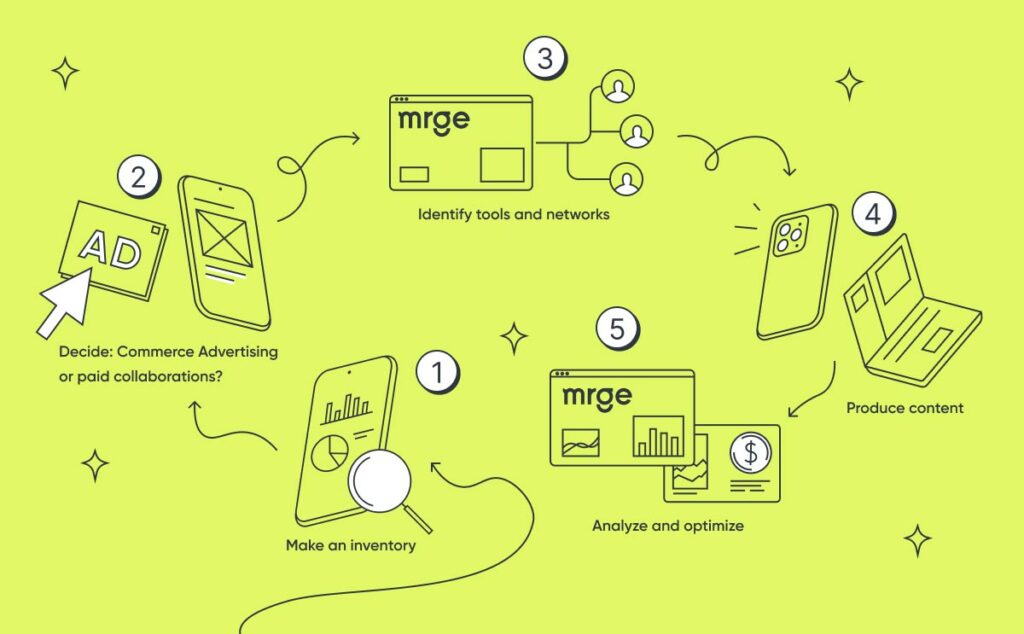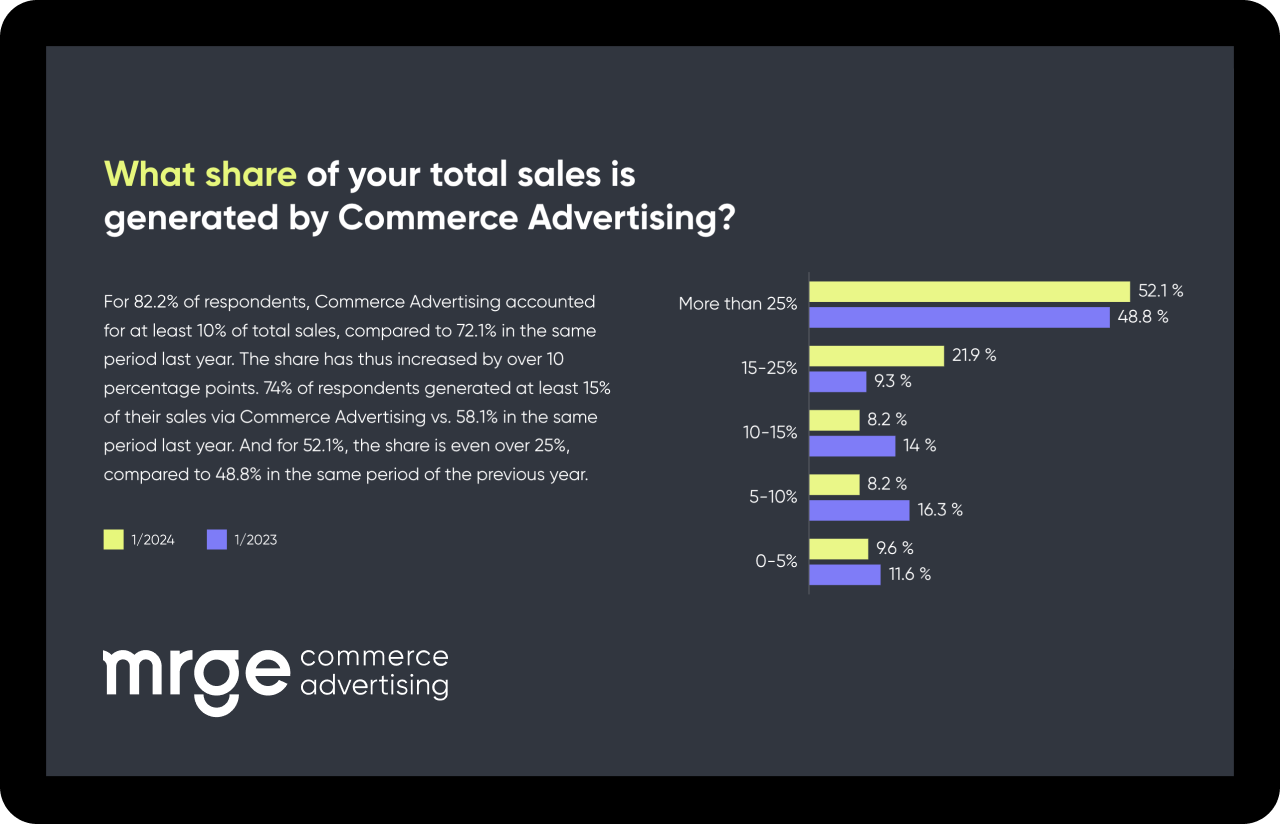Key Take Aways
Management summary: 5 key take-aways for quick readers
- With Commerce Content, creators can generate additional revenue streams.
- Their reach and target audience makes them attractive to brands.
- The additional effort for content creators is minimal.
- Commerce Advertising is less flashy (and therefore more authentic) than sponsorship.
- Tools and networks make it easy to get started in Commerce Advertising.
What is Commerce Advertising?
Commerce Advertising refers to useful advertising that reaches users during the purchase-relevant phases of the customer journey. The advertising formats are aimed at clearly measurable conversions such as purchases or newsletter subscriptions. The advertising formats are appropriate to the content in whose environment they appear, and offer added value to users. The term Commerce Content is also used in this context. This refers to content published by creators that revolves around services or products and contains monetized links to these offers. This content can range from editorial articles, to videos and podcasts, to coupons and deals.
Why should content creators rely on Commerce Advertising?
Content creators – such as bloggers, YouTubers and influencers on Instagram and TikTok – are very attractive to the advertising market for several key reasons:
- They have relevant reach.
- They serve a very precise target group.
- They address issues in a credible way.
In addition, they produce the content that is relevant for advertisers anyway. Monetizing this content is often the next logical step. But how can content creators get started in Commerce Advertising?
5 steps to a Commerce Advertising strategy for content creators

1. Make an inventory
As a first step, content creators should get a systematic overview of their own content, both created and planned. List the topics covered as well as the content formats. It is irrelevant whether creators only cover a very specific topic or are more broadly positioned.
A range of insights can be derived from this inventory:
- Which topics and formats are particularly well-received by followers?
- Which topics have already been covered in detail (duplication can be avoided)?
- What aspects of a topic can be covered in more detail?
It’s also helpful for creators getting started in Commerce Advertising to have a solid idea of their followers. What are their interests? How do they interact with the content, the creator, and each other? Demographic data such as age and place of residence can also be interesting. In addition, content creators should consider whether there are other target groups they would like to reach with their content in the future.
2. Decide: Commerce Advertising or paid collaborations?
For influencers, paid collaborations and sponsorships are part of everyday life. Content creators are paid by companies to promote their products or services. The advantage for creators is that they usually do not have to take care of the establishment of such a cooperation themselves. Their reach, target group, and thematic focus make them interesting for advertisers, so that creators are approached by them (directly or via platforms) as cooperation partners. Under current law, however, such sponsorships must be clearly labeled as advertising. As a result, followers may perceive this content as less credible – and lose interest in it.
Commerce Advertising, on the other hand, is less obvious: Content creators talk about products that have convinced them personally, carry out product comparisons, for example, and then link to the purchase options at the appropriate point. However, content creators must take care to monetize these links themselves.
3. Identify tools and networks
But creators are not completely on their own when it comes to monetizing their commerce content. Platforms like mrge and their networks enable bloggers and influencers to find suitable partnerships. With little effort, creators can register with mrge and create monetized links with which they can then forward their followers to the site of the companies also represented in the network via their content. These links can be placed in blog texts, TikTok and Instagram bios, video descriptions, or podcast show notes, for example. These links can be used to track exactly which conversion came about via which creator, so that the creator then receives the corresponding commission.
Several tools also help make content creation and monetization as smooth as possible. These include URL shorteners for generating links to post on social networks. Some platforms also offer browser extensions that can be used to obtain important information, such as CPA rates, directly from the merchant’s site. This information then helps identify the right partners.
4. Produce content
This step should be the easiest for content creators, because they just need to create authentic and interesting content for their followers. It is not necessary to be effusively positive about the product of a company from the partner program. On the contrary, Commerce Advertising thrives on neutrality and credibility. The only difference from non-monetized content is the placement of affiliate links.
5. Analyze and optimize
If creators want to reach even more people with their content, and generate higher revenues, it makes sense to regularly analyze the content. The Commerce Advertising platforms also help with this. Creators can see exactly where which revenues come from, but also how people interact with the content, and how the users access their content. These insights help to uncover potential for optimization.
Win-win situation
Commerce Advertising offers content creators the opportunity to generate additional revenue streams – using the content they’re creating anyway. With minimal additional effort, content can be monetized and a major financial impact achieved. The numerous advantages over traditional sponsorship are what make Commerce Advertising so effective: When content creators talk about products that have personally convinced them, and neutrally draw attention to purchase opportunities, the entire contribution is not labeled as advertising. Commerce Advertising is much more understated than sponsoring, but no less effective.


















